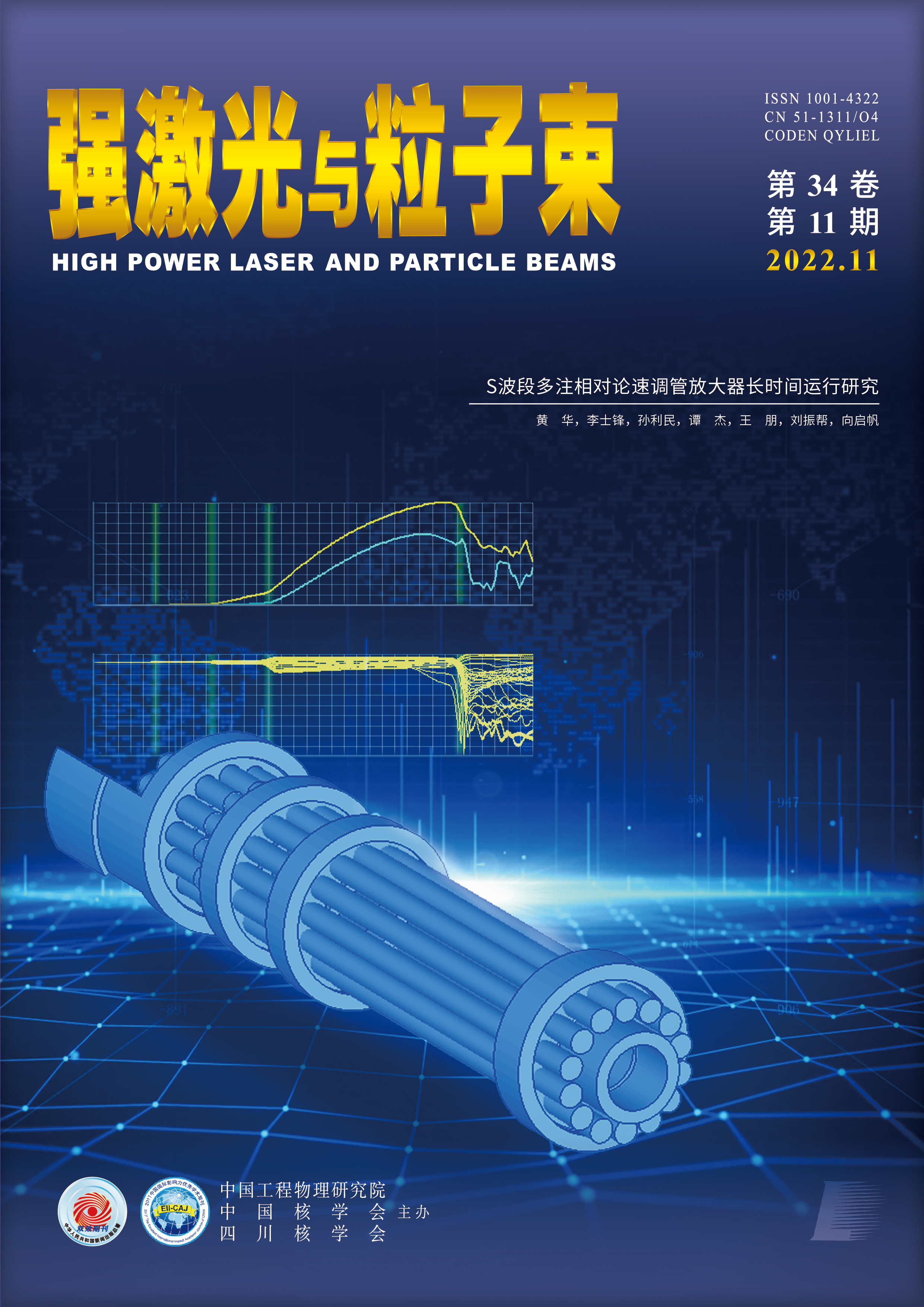2022 Vol. 34, No. 11
In high power fiber laser system, the cladding power stripper can remove cladding light to ensure the quality of the output laser beam. The fiber end-cap reduces the optical power density of the output fiber end by expanding the output laser beam, so...
Power scaling of high-brightness fiber laser is limited by the mode instability and nonlinear effects. To overcome these limiting factors, a large mode area confined-doped fiber is designed and fabricated. By utilizing the homemade confined-doped fib...
With the progress of semiconductor manufacturing technology and the expansion of semiconductor laser applications, the demand of semiconductor laser for high power and miniaturized driving power becomes more and more urgent. It drives power supply to...
For the low efficiency of phase stereo matching in binocular structured light 3D reconstruction, a fast matching method with polar line approximation is proposed. Firstly, the polar lines are described based on the intersection line between the optic...
The grating feedback characteristics of distributed feedback (DFB) quantum cascade lasers with TM mode were simulated by difference time domain method. Comparative analysis was mainly focused on the optical properties of lateral coupled grating and r...
We propose a weakly coupled polarization-maintaining few-mode fiber (PM-FMF) design with elliptical-core and bow-tie stress-applying areas. Using a high refractive index core, the proposed fiber can support 32 independent eigenmodes in the 1505−1585 ...
Two-dimensional PIC (Particle-in-Cell) simulation is used to investigate the electron acceleration process when a vacuum channel is filled with pre-plasma. Using a tightly focused ultra-intense short-pulse laser to interact with a hollow plasma chann...
The manual classification methods for surface defects of precision optical elements are inefficient and the accuracy is easily affected by manual factors such as fatigue. And the accuracy based on traditional machine learning methods needs to be furt...
By comparing the continuity and resolution of virtual image at “point convergence criterion” and “phase difference criterion”, it is proposed that the former is more suitable for virtual image model of wide-angle velocity interferometer system for an...
To realize a high power microwave source of longtime operation with a low guiding magnetic field, an S-band, GW level multi-beam relativistic klystron amplifier (RKA) has been investigated by means of theoretical modeling, numerical simulation and ex...
Observation of the return stroke channel is a key approach in understanding return stroke's developing process and mechanism, and therefore to improve the engineering model. A lightning progression feature photic observation system (LiPOS) is used to...
Aiming at the loaded effect of reverberation chamber, the lossy approaches in cavity are analyzed, and it is concluded that the loaded lossy is the only controllable approach in the testing process. Then five test scenarios are constructed to estimat...
In view of the limitations such as close effective distance and low efficiency of the existing radioactive source detection methods, high-power microwave (HPM) is used to detect radioactive materials over a long distance because of its good spatial r...
To meet the beam intensity measurement requirements at the extraction section of the cyclotron in Heavy Ion Medical Machine (HIMM), the integral current transformer (ICT) and lock-in amplifier scheme was adopted to implement non-destructive and real-...
To improve the alignment accuracy of the magnet in high energy synchrotron radiation source, the magnetic center is used instead of the mechanical center to calibrate, the magnetic center position of the magnet is obtained by vibration wire or rotati...
Taking the cross-linked ethylene tetrafluoroethylene copolymer (X-ETFE) cable used outside the spacecraft as the test object, the X-ETFE cable was irradiated with 8000 equivalent solar hours (ESH) vacuum ultraviolet (VUV) with a 5-fold acceleration f...
This paper introduces the trigger system of the middle energy X-ray device and experimental results. The trigger system controls triggering of laser-switches in six modules and the electric trigger part. Each switch is triggered by one laser. Seven l...
The cooling-down time limits the capability of repetitive operation of the pulsed magnet. A fast cooling method for the pulsed magnet based on heat transfer of flowing liquid nitrogen (LN2) in micro-channels formed inside the conductors of the pulsed...
In the application of pulse power technology in tumor ablation, sewage treatment and other fields, it is found that bipolar electric pulse is often better than unipolar electric pulse, which greatly stimulates the research and development demand of b...
For multi-MeV X-ray flash radiography, the areal density of object can be obtained by the primary direct X-ray. Objects of flash radiography often have very high areal densities which greatly attenuate the intensity of direct X-rays emitted by the so...
Neutral beam injection systems based on RF negative ion sources are the best choice for high power long pulse (steady-state) operation of neutral beam injection systems. The negative ion source is the core component of the neutral beam injection syst...
Quench protection system plays an important role in superconducting magnet power supply system, as it can transfer and consume magnet energy rapidly. In the project of Comprehensive Research Facility for Fusion Technology (CRAFT), the technical requi...
It is necessary to monitor plutonium aerosol when doing experimental research with plutonium material. Plutonium material experiments are usually carried out in sealed containers, which guarantees that the plutonium aerosol will not leak out to the e...
Aiming at the insufficient stiffness of the bonnet polishing system of the six-degree-of-freedom tandem joint robot, which may cause vibration and further mid-spatial-frequency errors, used we the IRB 6700 robot as the research object, established th...
The single-pixel imaging system is a computational optical imaging technology that obtains the two-dimensional distribution information of the target through a single-pixel detector without spatial resolution. Compared with traditional direct imaging...




 Email alert
Email alert RSS
RSS

